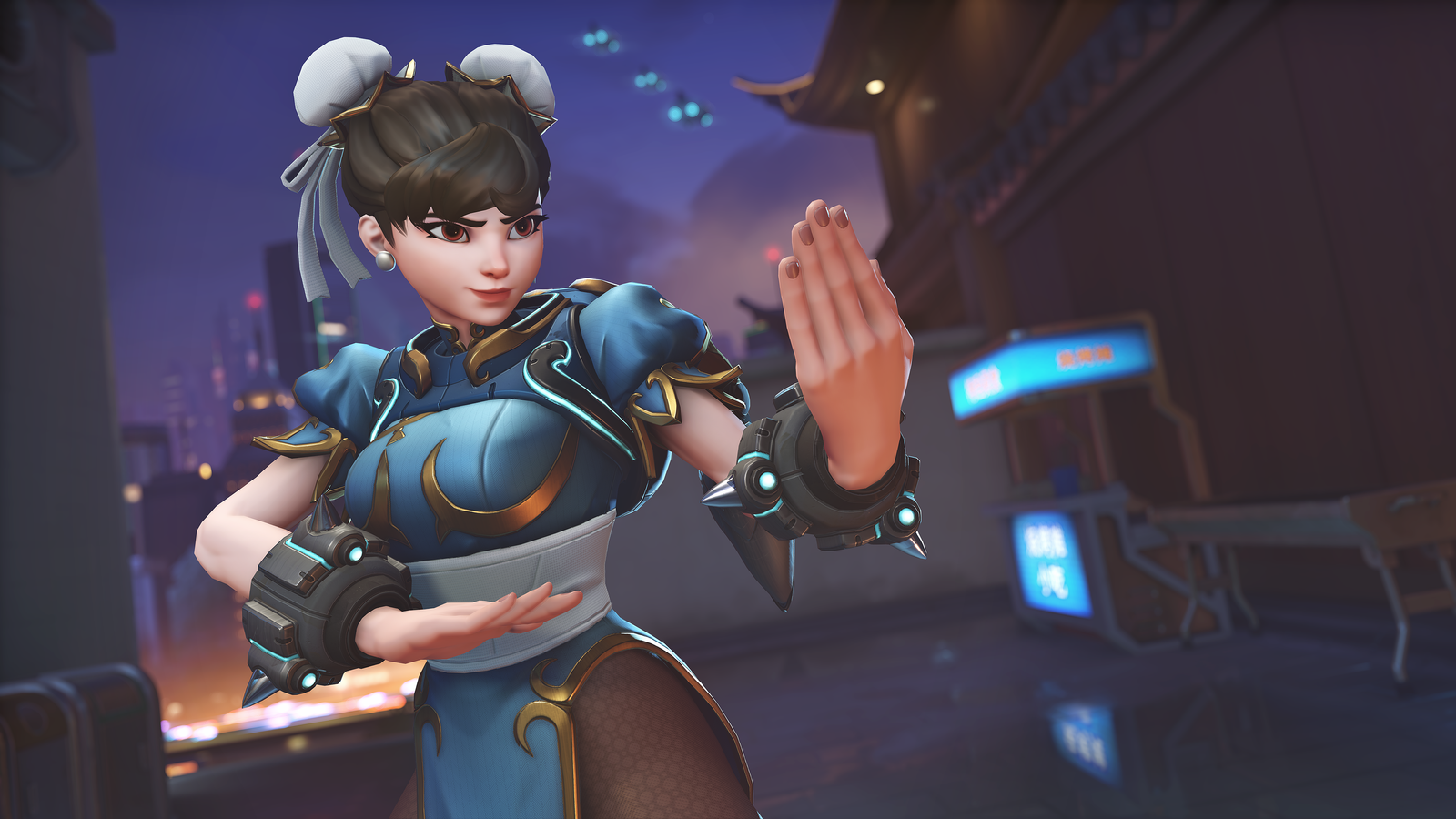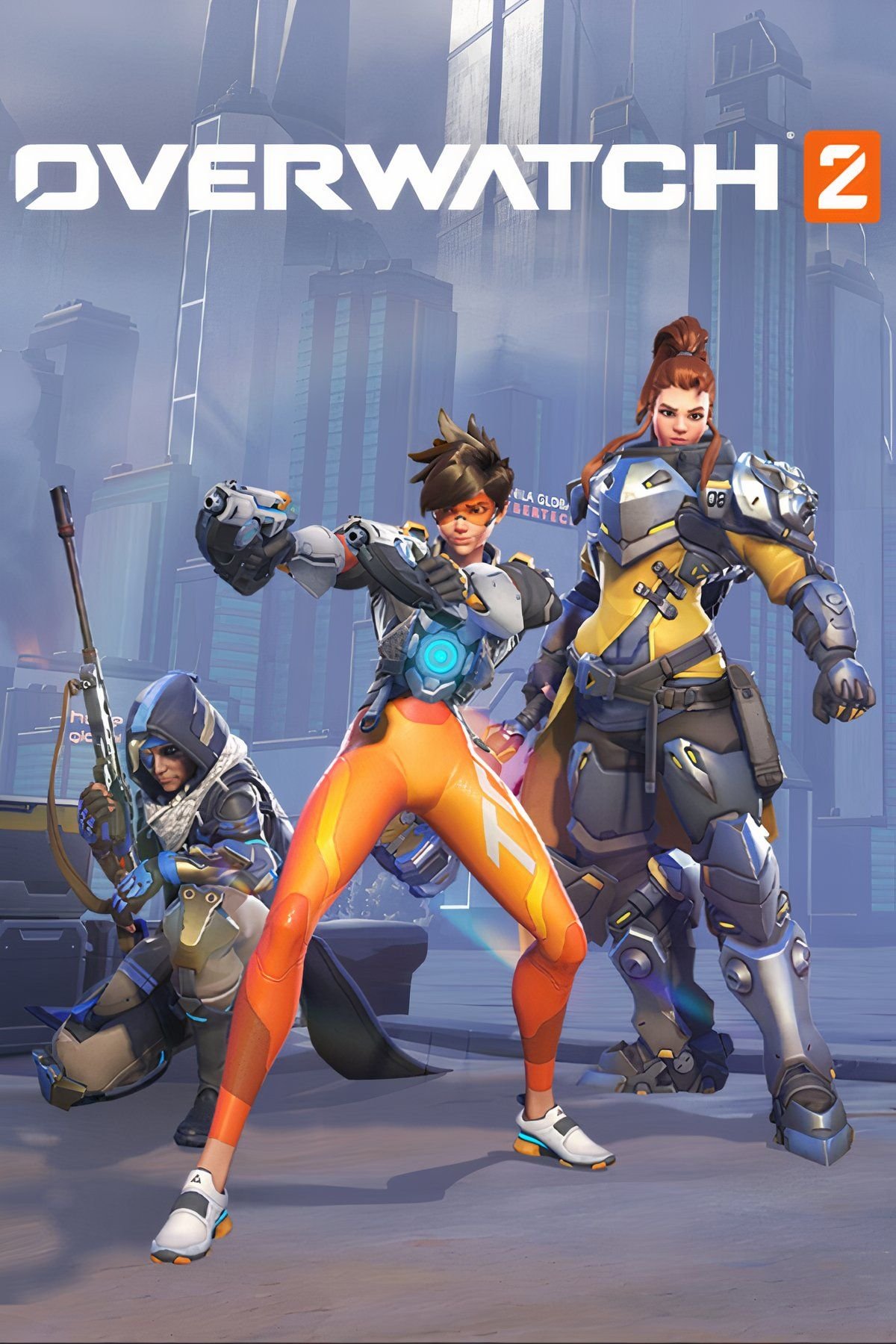Overwatch 2 has received yet another collaboration just days after the Mobile Suit Gundam event came to an end. From May 20 to June 2, players will be able to purchase a number of Street Fighter skins for characters like Juno, Widowmaker, Winston, Hanzo, and more. It’s a cool crossover, and while some players are unsure about the skin choices for characters (I’m still flabbergasted that Kiriko is Juri instead of Sombra) it’s hard to deny the quality on offer.
From a bespoke animated trailer to overhauled menus to the premium cosmetics themselves, it’s hard not to feel excited about an event like this coming to my favourite hero shooter. But I also understand the very vocal criticisms, especially when the frequency of licensed events makes clear the kind of video game Overwatch has become in recent years. Since the sequel released a handful of years ago, Blizzard has deliberately changed it to be more and more like Fortnite.
To understand why Overwatch needed to change, we first need to cast our eyes all the way back to 2016, when the hero shooter first launched. At the time, it was undeniably fresh with not only its nuanced gameplay formula and charming roster of characters, it also lacked any form of substantial competition.
Blizzard was still a beloved developer prior to scandals that would leave a permanent mark on the studio’s reputation. Everything it touched turned to gold, and that included its first foray into a new genre with Overwatch. To Blizzard’s credit, it was an excellent game that went on to sell millions of copies, earn rave reviews, and sweep award shows, even winning Game of the Year at The Game Awards. It was a big deal.
But as multiplayer titles began to embrace new genres like battle royale, slowly welcoming the live-service future, Overwatch fumbled for purpose. The first game was slowly outstaying its welcome with repetitive seasonal events and a bloated roster of characters that kept putting the delicate balance of tank, DPS, and support at risk. I grew apart from it as I left college and fell into the good graces of Fortnite and PUBG because they were far more interesting.
When Overwatch 2 was first revealed at BlizzCon 2019, it felt like a sign of desperation. Like Blizzard wanted to reveal the sequel to distract from negative publicity and keep Overwatch in the public consciousness. It felt like a half-step in all the ways that mattered and failed to convince its large audience that the ambitious PvE mode would deliver.
Turns out we were correct in being concerned, since it would take several more years for the sequel to finally arrive, and when it did, it lacked pretty much everything it initially promised. And it was free-to-play now, which brought with it an entirely new set of dynamics to consider.
It was now in a landscape where people had already turned against it, and now it needed to compete with much bigger and, arguably, much better games. I’ll still stand up for Overwatch and the fact it feels incredible to play and looks even better, and has remained consistent in both its characters and gameplay for most of its lifespan. But in the modern era, that level of quality isn’t enough to stay afloat. It needs to get creative, strive to innovate, and sometimes get a little bit silly with licensed crossovers. In recent months, it has done just that.
And These Might Be The Key To Its Salvation
Since March 2024, Overwatch has done crossover events with Cowboy Bebop, One Punch Man, My Hero Academia, Transformers, Avatar: The Last Airbender, Gundam, and now the recently arrived Street Fighter. All of these transform the main menu while introducing loads of premium skins to the storefront that can be purchased as part of a bundle or individually.
They have become major moments of each season, existing alongside the battle pass and offering additional incentive for players to spend money and play with their favourite heroes. I use it as an excuse to jump in as heroes I haven’t touched in months or never at all, especially if a character from another franchise I love is suddenly being cosplayed. It’s a great novelty, and compared to Fortnite or Call of Duty the quality feels notably superior. They look, sound, and feel great to play and don’t infringe on the gameplay experience at the centre.
Compared to Fortnite or Call of Duty, each of these crossovers feels more earned, like they fit within the ecosystem of Overwatch and don’t feel like cheap marketing tie-ins that cease to exist the second their purpose is fulfilled.
Blizzard has struck a balance here where each crossover feels like an event worth getting excited about, and now it has made good strides in improving its core gameplay with the addition of Stadium, perks, and a more considered hero progression system. Everything can exist in tandem. Overwatch imitating Fortnite first felt like a sign of desperation, but now it seems like a surefire way for it to flourish.





